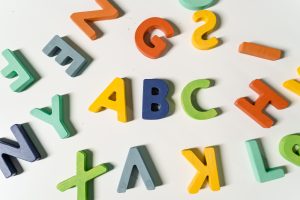Phonics is considered one of the most effective methods of learning to read, however, children with dyslexia often find phonics instruction particularly difficult to master.
The barriers to learning occur early in the learn to read process and the difficulties can easily be compounded each time new concepts are introduced. Often when this bottleneck in learning occurs, it appears that letter sound associations may be at the core of this difficulty.
There are many factors that can contribute to learning difficulties that need to be considered including the method and delivery of instruction as well as the ability of the child to pay attention and focus, as well as the way a child processes what they learn to their long-term memory.
To enable a student to move beyond these difficulties to successfully develop their reading skills, it’s important to consider why these difficulties exist in the first place and what we can do as teachers, parents and carers to bridge the learning gap and help young dyslexic students become confident, lifelong readers.
Differences in the dyslexic brain when learning to read
It’s important to note that the skill of reading does not develop in one area of the brain only. It involves multiple processes that occur across different regions in the brain. During reading, multiple parts of the brain are activated and work in constant collaboration.
For experienced readers, these regions are primarily in the brain’s left hemisphere. Several studies involving functional imaging techniques that compare brain activation patterns of readers with and without reading difficulties indicate that the patterns of activity are notably different for struggling readers than in those of confident readers.
For the struggling reader the brain pathways for language and cognition are not as efficient or established. Dyslexics who struggle to read use different parts of brain, in the right hemisphere which is not as efficient in processing language. (Hudson, R.F., High, L., Al Otaiba, S, 2007)

Phonics Instruction
Through Phonics instruction, children learn the predictable relationship between letters and their sounds. The verbal instructions of these letter sound relationships are transient and disappear after the words have been spoken.
Beyond instruction, the student must rely on memory to accurately recall the letter sound relationship when decoding a word.
Successful reading outcomes depend upon the retention of this information and the ability to apply it to the right letters at the right time.
The relationship between the letters and sounds are bound by a series of pre-determined rules.
Once effectively processed to the long-term memory, these rules of phonics form part of an abstract conceptual system within the mind of the student. The letter sound relationship cannot be seen when decoding a word and the student relies on memory to accurately recall the letter sound relationship.
As a child becomes more familiar with these rules, letter sound patterns also become more familiar and more easily recognised within the words they read.
Overtime, through a process of step-by-step learning and the consistent practice of word decoding, reading skills develop and the ultimate goal of reaching reading fluency can eventually be achieved.
For most students, this method of instruction is sufficient in teaching reading during the early primary school years.
However, due to neurological differences in the way the dyslexic brain processes language, phonics instruction alone can prove to be particularly difficult for dyslexic students to grasp.
These differences form part of the blueprint for teaching dyslexic students how to connect letters and sounds, and develop the lifelong skill of reading.
Establishing and retaining the associations between written letters and their sounds are essential to developing reading skills. A more concrete way of connecting letters and sounds may hold the key to learning to read for dyslexic students.
Learn to Read Programs for Children with Dyslexia
A large body of research supports the effectiveness of phonics instruction and multi-sensory approaches in learning to read. Visual Phonics is a multi-sensory teaching tool that has the potential to improve reading outcomes by engaging more than one sense at a time during instruction.
Visual Phonics approaches vary in style and delivery, and depending on the program can range from the use of hand gestures, chants or images and when paired with phonics instruction can aid the learning to read process. Programs that engage more than one sense during instruction have been found to enhance a student’s memory and their ability to learn.
Programs like The Reading Switch which use explicit and systematic instruction together with a dual code reading approach can make a considerable difference in helping students with dyslexia learn how to read.
Fortunately, there is more than one way to learn phonics. Programs that offer multi-sensory approaches to learning have been found to be effective in helping dyslexic students learn to read.
References
Eden, G; 2016, Dyslexia and The Brain. Understood
https://www.youtube.com/watch?v=QrF6m1mRsCQ
Hudson, R.F., High, L. Al Otaiba, S (2007). Dyslexia and the brain: What does current research tell us?
The Reading Teacher, 60 (6), 506-515
University of California Television (2015) Brain Imaging Studies of Reading and Reading Disability https://www.youtube.com/watch?v=-aRfWcfCYKM
The Reading Switch is a Dual Code Reading Program for Children with Dyslexia.
Register for your free trial today!





